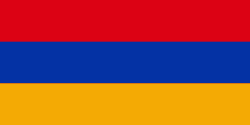Vayots Dzor Province (Vayots’ Dzor)
The province is home to many ancient landmarks and tourist attractions in Armenia including the Areni-1 cave complex and Areni-1 winery of the Chalcolithic period, the 8th-century Tanahat Monastery, the 10th-century fortress of Smbataberd, and the 13th-century monastery of Noravank. Vayots Dzor is also home to the spa-town of Jermuk.
The village of Gladzor in Vayots Dzor was home to the 13th and 14th-century University of Gladzor.
The province is named after the Vayots Dzor canton of historic Syunik, the ninth province of Ancient Armenia. The exact etymology of the name Vayots Dzor is unknown, although it is popularly understood to mean valley or canyon of sorrows (vay is an exclamation of sorrow or pain in Armenian, a cognate of the word "woe"). According to folk tradition, the region received this name after a powerful earthquake struck the area. Historian Grigor Ghapantsyan considers it more likely that the name Vayots Dzor derives from the name of an ancient tribe or ethnic group with the name Vay, perhaps connected with Biaini, the endonym of the ancient kingdom of Urartu.
Map - Vayots Dzor Province (Vayots’ Dzor)
Map
Country - Armenia
 |
 |
| Flag of Armenia | |
Armenia is a unitary, multi-party, democratic nation-state with an ancient cultural heritage. The first Armenian state of Urartu was established in 860 BC, and by the 6th century BC it was replaced by the Satrapy of Armenia. The Kingdom of Armenia reached its height under Tigranes the Great in the 1st century BC and in the year 301 became the first state in the world to adopt Christianity as its official religion. The ancient Armenian kingdom was split between the Byzantine and Sasanian Empires around the early 5th century. Under the Bagratuni dynasty, the Bagratid Kingdom of Armenia was restored in the 9th century. Declining due to the wars against the Byzantines, the kingdom fell in 1045 and Armenia was soon after invaded by the Seljuk Turks. An Armenian principality and later a kingdom Cilician Armenia was located on the coast of the Mediterranean Sea between the 11th and 14th centuries.
Currency / Language
| ISO | Currency | Symbol | Significant figures |
|---|---|---|---|
| AMD | Armenian dram | Ö | 2 |
| ISO | Language |
|---|---|
| HY | Armenian language |
















